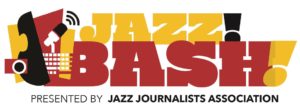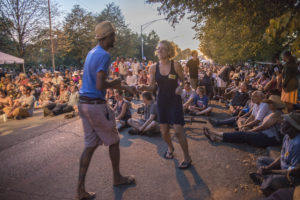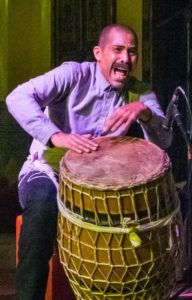I daresay the JazzBash! on Sunday, 9/11 is the first ever virtual hybrid Awards party/live Jazz Cruise auction/online concert from six U.S. cities/conference of activist panelists/bar with storytellers and presenters, live improvised painting, exclusive jazz photography exhibits and more — in immersive environments depicting noted jazz sites through which attendees — musicians, critics, the general […]
Jazz Congress, Winter JazzFest, shape of jazz to come
The first Jazz Congress co-hosted by Jazz at Lincoln Center and JazzTimes magazine Jan 11 and 12, 2018 and the 14th annual Winter JazzFest Marathon produced in downtown Manhattan Jan 12 and 13, offered contrasts and prompted crosstalk. It wasn’t like these were conventions of different parties, but different narratives were going down. The Congress’s sessions […]
Hyde Park Jazz Fest, summer’s last dance (photos)
Chicago’s Hyde Park Jazz Festival in the first days of fall (Sept. 23 & 24th) which were unusually hot, is an exceptional event, curated for creative artistry, local and otherwise, drawing a highly diverse crowd to a fair that mixes popular and specialized performances at a range of boutique venues. Produced by an independent 501c3, the 11-year-old Hyde […]
Jazz warms Chi spots: Hot House @ Alhambra Palace, AACM @ Promontory
There are good arguments for building venues just for jazz. But speaking of arts communities in general: Most are moveable feasts, fluid, transient, at best inviting to newcomers to the table. It’s demonstrable that when jazz players and listeners alight at all-purpose spaces such as Chicago’s Alhambra Palace, where Hot House produced the trio of saxophonist David Murray, bassist […]
Do you jazz? Yes, eyeJAZZ!
A quick glimpse of a jazz club, a chat with fans going into or leaving the show, a word with a musician coming offstage or maybe at practice — these bits of real life can be captured today in high quality video and audio equipment that’s readily at hand — mobile phones and HD pocket […]
Last glance 2010: great performances and best beyond jazz
There’s not much time left, so here are three of my best memories of live music over this crazy year, and a couple handfuls of favorite recordings that promise to be listenable for quite a while forward —
Announcing eyeJAZZ.tv & Happy 45th b’day AACM
eyeJAZZ.tv, a wave of guerrilla video music-news clips being initiated by the Jazz Journalists Association, has posted its first example — my brief production from last week’s 45th birthday concert of the AACM featuring composer-saxophonist Roscoe Mitchell, flutist and AACM chair Nicole Mitchell (no relation) and saxophonist Ari Brown, at Chicago’s Museum of Contemporary Art.
Michelle Obama refutes jazz as boys’ club
There are “powerful reasons . . .we ought to consider” for why musicians and listeners “tend to be a brotherhood,” according to a self-described “middle-aged white male swing-to-bopper.” He’s identifying, not justifying . . .Then the First Lady upsets the paradigm. She brings her daughters to the gig. I’ve got pressing deadlines, but luckily several […]
Ten top of 2008 and many more recommendations
So much music, so little time — it’s absurd to whittle down this year’s “best” recordings to 10, an act that merely bows to convention. Why not 15? 25? 50? — if there are that many albums that reward repeated listening with enjoyment and revelation. I make no claims for the following list being definitive […]





